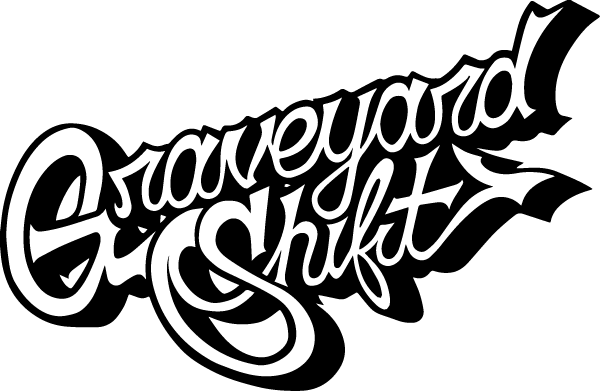```html
Chilling True Exorcism Stories: Are Exorcisms Real?
The notion of exorcisms has long piqued the human imagination, with tales of demonic possessions and spiritual battles resonating across cultures and epochs. But as intriguing as they are, how many of these stories hold water? In this blog post, we unravel some of the most chilling true exorcism stories and explore the puzzling question: Are exorcisms real?
Understanding Exorcism: A Brief Overview
Exorcism, derived from the Greek word "exorkizō," meaning "to bind by an oath," is a ritual intended to expel evil spirits or demons from a person or place believed to be possessed. This practice is a part of various religious traditions, including Christianity, Islam, Judaism, and Hinduism.
The Historical Context
The belief in demonic possession and the practice of exorcism have ancient roots. Across different cultures and eras, exorcisms were often performed by spiritual leaders, shamans, and religious figures. From ancient Mesopotamia's rituals to the medieval Christian rites, the concept has evolved, but the core intent remains the same: to cast out malevolent entities.
Real-Life Exorcism Stories: Spine-Chilling Accounts
To gauge whether exorcisms are real, we delve into some terrifying, documented cases that have fascinated and horrified people around the world.
The Exorcism of Anneliese Michel
One of the most haunting exorcism stories is that of Anneliese Michel, a young German woman. In the 1970s, Michel began experiencing severe convulsions, hallucinations, and disturbing behaviors. Doctors diagnosed her with epilepsy and psychiatric disorders, yet her family believed she was possessed by demons.
Over ten months, two priests performed 67 exorcism sessions on Anneliese. Tragically, Michel died of malnutrition and dehydration in 1976. Her parents and the priests were later convicted of negligent homicide. The case raises critical questions about mental illness versus demonic possession.
The Exorcism of Robbie Mannheim (The Real Story Behind "The Exorcist")
The 1949 exorcism of a boy known by the pseudonym Robbie Mannheim inspired the famous horror movie, "The Exorcist." Robbie exhibited strange behavior, including speaking in foreign languages and marks appearing on his body.
A priest, Rev. William Bowdern, conducted multiple exorcism sessions over several weeks. Witnesses reported objects moving on their own and strange noises during the rituals. Although Robbie eventually returned to normal life, the case remains shrouded in mystery, blending folklore with documented evidence.
Clara Germana Cele
In 1906, Clara Germana Cele, a 16-year-old South African girl, claimed to have made a pact with the devil. Shortly after, she displayed bizarre behavior, including violent fits, sudden knowledge of foreign languages, and aversion to religious artifacts.
Two priests performed an exorcism on Clara, which lasted two days. Witnesses claimed to have seen her levitate and heard her speak in multiple languages. After the exorcism, Clara returned to her normal self, but the incident left an indelible mark on those who witnessed it.
Scientific Perspectives on Exorcism
Despite these chilling accounts, the scientific community remains skeptical about exorcisms. Most cases attributed to possession are believed to be manifestations of mental illnesses, such as:
-
Schizophrenia: This condition can involve hallucinations and delusions, which might be interpreted as signs of possession.
-
Dissociative Identity Disorder (DID): Previously known as multiple personality disorder, DID can cause a person to exhibit different personalities, which might be mistaken for demonic possession.
-
Epilepsy: Some epilepsy types involve convulsions and unusual behavior, akin to what has been described in possession cases.
Psychiatrists argue that exorcism rituals might sometimes provide a placebo-like effect, where the afflicted person’s belief in the ritual's power can lead to symptom relief. However, this is far from conclusive and remains a topic of debate.
Exorcisms in Modern Times
In contemporary society, exorcisms continue to be performed, particularly within the Roman Catholic Church. The Vatican even holds training sessions for exorcists and acknowledges the role of exorcism in dealing with cases of demonic influence.
The Rise of Secular Exorcism
Interestingly, the practice of exorcism isn't confined to religious contexts. A rise in secular exorcisms, wherein individuals without religious affiliations claim to expel negative energies, has been observed. These are often marketed as spiritual cleansings or energy healings, showcasing the enduring allure of exorcism across time and belief systems.
Conclusion: The Reality of Exorcisms
So, are exorcisms real? The answer largely depends on one's perspective. For those who hold spiritual beliefs, exorcism is a practical and profound intervention against malevolent forces. For skeptics, these rituals are seen through the lens of psychological and medical phenomena.
Whether rooted in faith or dismissed as superstition, exorcism stories continue to mesmerize and terrify. They evoke fundamental questions about the human mind, spiritual warfare, and the unexplained fringes of our world.
In the final analysis, the truth about exorcisms lies at the intersection of belief, religion, and science - making it one of the most captivating enigmas of humankind.
```

